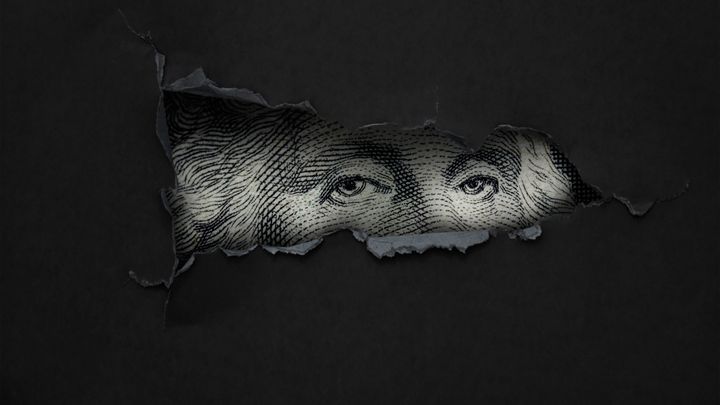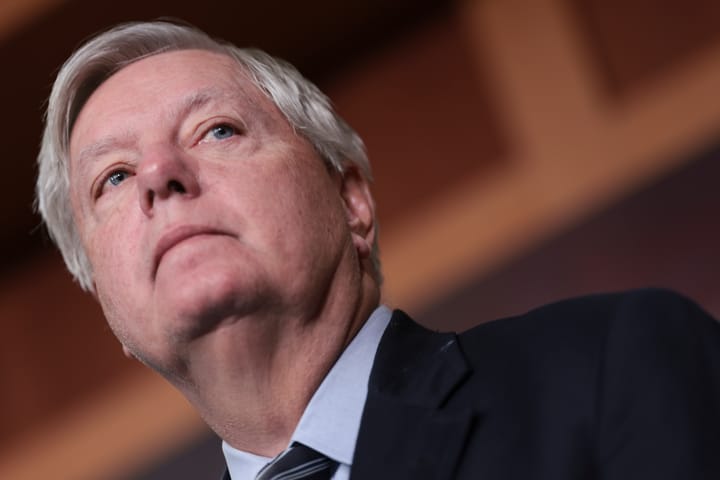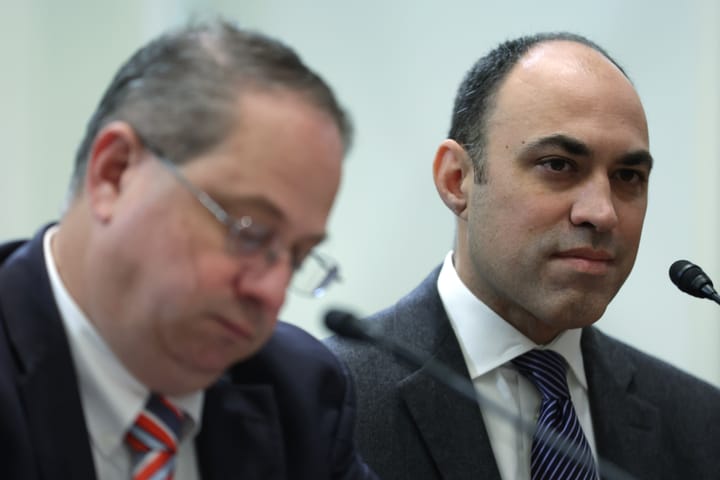Last month, the Republican primary runoff for a South Carolina Senate seat in the area around Myrtle Beach saw a rush of anonymous attack ads on issues ranging from guns and abortion to taxes and immigration.
One group that bought over half a million dollars of television ads attacking incumbent Luke Rankin, the South Carolina Conservatives Fund LLC, was created two days after the runoff started, the Charleston Post and Courier found. The LLC listed an address in Greensville, S.C. in its ads—but as reporters Andrew Brown and Jamie Lovegrove discovered, the owner of the building had never heard of the company, which is registered in Ohio. The LLC may well have picked a local address at random out of the phone book.
The experience of people in South Carolina who were deluged with ominous, anonymous ads is an example of how state disclosure laws are coming up short of ensuring transparency in election spending, Austin Graham, legal counsel with the nonpartisan Campaign Legal Center (CLC), tells Sludge.
“Where the action is in state campaign finance reform is with federal groups that don’t meet state requirements of PACs or 501(c)(4)s, so they’re not subject to the same disclosure rules as candidate committees and PACs that are registered with state authorities,” Graham said.
Untraceable spending to influence state elections has dramatically risen since the U.S. Supreme Court’s 2010 Citizen United ruling, which allowed groups that are technically independent of candidates and political parties to spend unlimited amounts of money on political contests. Groups buying TV ads attacking a candidate can do so through “dark money” 501(c)(4) nonprofits, which typically do not disclose their donors, or through a “gray money” PAC, which is required to disclose its donors, but may list groups whose funding sources are opaque.
Fully transparent outside spending on elections fell from 76% in 2006 to just 29% in 2014 in six states, according to a June 2016 report, “Secret Spending in the States,” by the nonpartisan policy institute Brennan Center for Justice. In those states analyzed—Alaska, Arizona, California, Colorado, Maine, and Massachusetts—dark money spending by outside groups surged by 38 times, on average, during that time.
Graham, with CLC’s State and Local Reform program, points to some bright spots in the national landscape where voters can access information about the funding behind fear-mongering ads they see on TV and election mail they receive close to Election Day. “There are states that have done a lot more than the federal level—for example, California, Rhode Island, and Minnesota—where disclosure requirements are much better. Then there’s South Carolina, which has atrocious disclosure requirements for groups that aren’t PACs.” (South Carolina Senator Rankin, who has held his seat since 1993, fended off his challenger last month and won his runoff by 1,792 votes, with 58% of the ballots cast.)
Looking at how states can ensure public knowledge about who’s ultimately paying for election ads after this November’s contests, Graham says, “The most important area in need of reform is in disclosures around independent expenditures by outside groups. Some states have a huge gap where PAC groups have to report their spending, but there’s nothing there for other groups that make expenditures.”
Other states that did not require disclosure of independent expenditures as of the 2018 election cycle—let alone details on who’s funding the groups making them—are Alabama, Indiana, and New Mexico. In April 2019, New Mexico moved to adopt greater disclosure of independent expenditures as part of a package of ethics reforms. Enhancing dark money disclosure was named as a priority by the newly-elected Colorado secretary of state, Democrat Jena Griswold, after the 2018 elections.
Aaron McKean, also legal counsel with CLC’s State and Local Reform program, points to the results of a bipartisan poll from November 2019 that found 83% of voters “support public disclosing contributions to organizations involved in elections,” with 56% “strongly in support.”
When it comes to being informed about the sources of state election spending, “The starting point is where voters and constituents are,” McKean told Sludge. “They’re most interested in transparency in elections. The 83% of voters in support speaks to the importance of disclosure in the electorate. The groundswell is there.”
The ability for states to set meaningful disclosure requirements scored a significant win in June, when the Supreme Court said it would not reconsider a strong Montana law requiring dark money groups to register with the state as PACs if they run campaign ads referring to a candidate or ballot issue.
On the less-sunlit side of the disclosure spectrum, in March of 2019, Mississippi’s Republican government trifecta passed a law that prohibits state agencies from requiring any disclosure by politically active nonprofits. On December 28, 2018, Michigan’s Republican Governor Rick Snyder vetoed a similar bill passed by the state’s lame-duck House of Representatives.
At the federal level, Democrats in Congress have since 2012 introduced the DISCLOSE Act, which would require organizations spending money in elections—including dark money nonprofits—to promptly disclose donors who have given $10,000 or more during an election cycle. The DISCLOSE Act’s provisions were updated and included in H.R. 1, the For the People Act of 2019, a sweeping ethics package passed by the Democratic House in March 2019.
Rhode Island is one state government that passed disclosure laws based on the DISCLOSE Act, requiring groups making independent expenditures of $1,000 or more to report their donors and expenditures to the state election board. The rules prompted a November 2019 lawsuit from two conservative groups that argued that revealing their donors’ identities would make donors less likely to give.
A Patchwork of State Contribution Limits and Disclosure Laws
States vary considerably in their laws for how different types of entities—individual donors, PACs, political parties, corporations, and others—are subject to campaign contribution limits, public disclosure rules, and other restrictions, like whether donations by lobbyists are prohibited. An interactive map with information about historical election rules in every state as of 2018 is available from the think tank Campaign Finance Institute (CFI), a division of the nonprofit National Institute on Money in Politics.
As of the last election cycle, 11 states had no contribution limits for an individual donating to a candidate: Alabama, Iowa, Indiana, Mississippi, North Dakota, Nebraska, Oregon, Pennsylvania, Texas, Utah, and Virginia. The national median for individual contribution limits in the other 39 states is $4,000 for governor, $2,000 for State Senate, and $1,600 for State House, according to the National Conference of State Legislatures.
Those 11 states correlate with CFI’s recent analysis of the states with the lowest percentage of campaign donations from small donations of $250 or less—that is, states where large donors, corporate contributors, and special interest PACs dominate campaign funding. Ten of the 11, excepting Nebraska, are in the bottom half of small-donor share among the 47 states that CFI recently analyzed. North Dakota (3%), Alabama (5%), Oregon (5%), and Utah (6%) are among the lowest nationwide by this metric.
Among the 22 state legislative chambers identified as 2020 battlegrounds by Ballotpedia, three are in states that have no individual contribution limits to candidates: the Iowa House, Nebraska Senate, and Pennsylvania House.
New Hampshire and South Dakota are unique in having contribution limits for individuals donating to state legislative candidates in 2018—$10,000 and $2,000, respectively—but no such limit for PAC donations. At least six more states have lower contribution limits for individuals than for PACs donating to state legislative candidates: Alaska ($1,000 vs. $2,000), Illinois ($5,600 vs. $55,400), New Jersey ($5,200 vs. $16,400), New Mexico ($5,000 vs. $11,000), Tennessee ($3,000 vs. $15,600), and Wyoming ($3,000 vs. $10,000).
Six states in 2018 had no contribution limits for corporations donating to candidates: Alabama, Illinois, Nebraska, Oregon, Utah, and Virginia. Similarly, over the past two decades, New York grappled with sky-high contribution limits through what was known as the “LLC Loophole,” where pass-through private companies were treated as individuals, enabling well-connected business interests to chain together multiple large donations—for example, up to $65,100 to statewide candidates. On January 24, 2019, New York Gov. Andrew Cuomo signed into law a significant overhaul of the state’s longstanding LLC loophole, prompted by new Democratic control of the State Senate after the 2018 primary elections ushered in several progressive reformers.
“Where contribution differences become a problem is when you have a prohibition on corporate contributions to candidates but it does not apply to contributions to a PAC or political party, so that opens up the possibility of donations going to a party, which then turns around and gives that same money to candidate, basically allowing them to be a conduit,” Graham said.
Graham highlights recent traction for public funding of campaigns as evidence that fair elections measures are catching on in state politics. “With broad support from Americans for transparency and accountability, we’ve seen support for public financing at the local level,” he said. In 2018, over 69% of voters in Denver passed a new public financing system, while a New York City ballot initiative voted 80% in favor of strengthening the city’s longstanding program last year, and Baltimore voters passed public financing with over 75% of the vote in 2018. “Public financing of elections offers more systemic change as to how campaigns operate and focus their fundraising efforts.”



